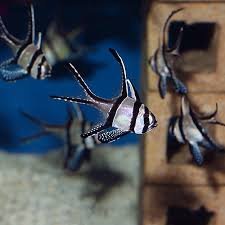
Chrysanthemums, admired for their beauty and resilience, are not immune to the influence of bacteria and insects, which can affect their growth, health, and overall vigor. Understanding the interactions between chrysanthemums and these organisms is essential for effective cultivation and management practices. In this section, we explore the impact of bacteria and insects on chrysanthemums and strategies for mitigating their effects.
**Bacterial Infections:**
Bacterial pathogens pose a significant threat to chrysanthemum health, causing diseases such as bacterial leaf spot, bacterial wilt, and bacterial blight. These diseases often manifest as dark lesions, wilting, leaf yellowing, and tissue necrosis, leading to stunted growth, reduced flower production, and plant decline. Bacterial pathogens can enter chrysanthemum tissues through wounds, natural openings, or insect feeding sites, spreading rapidly under favorable environmental conditions such as high humidity, warm temperatures, and prolonged leaf wetness. Once established, bacterial infections can be challenging to control and may require a combination of cultural, chemical, and biological interventions. Cultural practices such as sanitation, proper irrigation management, and crop rotation can help minimize disease spread and reduce inoculum levels in the growing environment. Additionally, copper-based fungicides, bactericides, and biological control agents can be applied preventively or curatively to manage bacterial diseases and protect chrysanthemum crops from infection. Regular monitoring, early detection, and prompt intervention are critical for effectively managing bacterial diseases and preserving chrysanthemum health and productivity.
**Insect Pests:**
Chrysanthemums are susceptible to damage from a variety of insect pests, including aphids, thrips, spider mites, caterpillars, and leafhoppers, which feed on plant tissues, sap, and flowers, causing aesthetic damage, reduced vigor, and yield loss. Aphids, for example, can colonize chrysanthemum foliage and flowers, sucking sap and excreting honeydew, which promotes the growth of sooty mold and attracts ants. Thrips feed on flower buds and petals, causing distortion, discoloration, and premature senescence, while spider mites puncture leaf cells and extract contents, leading to stippling, webbing, and reduced photosynthetic activity. Caterpillars and leafhoppers chew on leaves, buds, and stems, causing defoliation, flower damage, and plant stress. To manage insect pests effectively, integrated pest management (IPM) strategies are recommended, which emphasize cultural, biological, and chemical control methods to minimize pest populations while preserving beneficial organisms and minimizing environmental impact. Cultural practices such as sanitation, crop rotation, and plant spacing can reduce pest pressure and create less favorable conditions for insect development and reproduction. Biological control agents, such as predatory insects, parasitic wasps, and entomopathogenic nematodes, can be deployed to suppress pest populations and provide natural regulation of insect pests. Selective insecticides, insecticidal soaps, and botanical extracts can be used judiciously as part of an IPM program to target specific pest species while minimizing non-target effects and pesticide residues. By implementing proactive pest management strategies, growers can minimize the impact of insect pests on chrysanthemum crops, ensuring healthy, high-quality plants for ornamental production and landscape use.
**Conclusion:**
Bacteria and insects pose ongoing challenges to chrysanthemum cultivation, requiring vigilant monitoring, proactive management, and integrated approaches to minimize their impact and preserve plant health and productivity. By understanding the biology, ecology, and behavior of bacterial pathogens and insect pests, growers can implement effective control measures and reduce reliance on chemical interventions, promoting sustainable and environmentally friendly production practices. Collaboration between researchers, extension specialists, growers, and industry stakeholders is essential for developing innovative solutions, sharing best practices, and advancing knowledge to address emerging threats and ensure the long-term sustainability of chrysanthemum cultivation. Through integrated pest management, cultural practices, and biological control, chrysanthemum growers can mitigate the impact of bacteria and insects, ensuring healthy, resilient plants that delight consumers with their beauty and vitality.
**2. Biological Control:**
In recent years, there has been a growing emphasis on the use of biological control methods to manage bacterial pathogens and insect pests in chrysanthemum production. Biological control relies on the use of natural enemies, such as predatory insects, parasitic fungi, and beneficial microbes, to regulate pest populations and suppress disease development, offering a sustainable and environmentally friendly alternative to conventional chemical pesticides. Predatory insects, such as ladybugs, lacewings, and predatory mites, feed on aphids, thrips, spider mites, and other insect pests, helping to keep populations in check and prevent outbreaks. These natural enemies can be introduced into chrysanthemum greenhouses or production fields as part of a biological control program, where they establish and maintain a presence, providing ongoing pest suppression and reducing the need for chemical insecticides. Similarly, parasitic fungi, such as Beauveria bassiana and Metarhizium anisopliae, infect and kill insect pests, including thrips and spider mites, through contact or ingestion, offering effective control with minimal impact on non-target organisms and the environment. Biological control agents can be applied preventively or curatively as part of an integrated pest management (IPM) strategy, which combines cultural, biological, and chemical control methods to achieve effective pest management while minimizing pesticide use and environmental risks. By harnessing the power of natural enemies and beneficial microbes, growers can enhance pest and disease management in chrysanthemum production, promoting ecological balance, biodiversity, and sustainability in agricultural systems.
**3. Resistant Cultivars:**
Breeding for resistance to bacterial pathogens and insect pests is another important strategy for managing pests and diseases in chrysanthemum cultivation. Plant breeders and researchers work to identify genetic traits associated with resistance or tolerance to specific pathogens or pests and incorporate these traits into new chrysanthemum cultivars through traditional breeding or biotechnological approaches. Resistant cultivars offer growers an effective and sustainable means of pest and disease management, reducing reliance on chemical pesticides and minimizing crop losses due to disease or insect damage. For example, chrysanthemum cultivars with resistance to bacterial leaf spot or powdery mildew may exhibit fewer symptoms, lower disease incidence, and higher yield potential compared to susceptible varieties under similar growing conditions. Similarly, chrysanthemum cultivars with resistance to aphids, thrips, or spider mites may experience reduced pest damage and require fewer pesticide applications for control. By selecting and planting resistant cultivars, growers can benefit from improved pest and disease management, enhanced crop performance, and reduced production costs, while also minimizing environmental impact and promoting sustainable production practices. Collaboration between breeders, growers, and researchers is essential for identifying and developing resistant cultivars that meet market demands for quality, performance, and diversity, ensuring the long-term viability and competitiveness of chrysanthemum production in global markets.
**4. Cultural Practices:**
Cultural practices play a critical role in preventing and managing bacterial diseases and insect pests in chrysanthemum production. Proper sanitation, crop rotation, and field hygiene help minimize disease inoculum and pest populations, reducing the risk of outbreaks and crop damage. Removing and destroying infected plant material, weeds, and crop residues can prevent the spread of bacterial pathogens and insect pests to healthy plants, interrupting their life cycles and reducing future infestations. Additionally, practicing good irrigation management, such as drip irrigation or furrow irrigation, can help reduce leaf wetness and humidity levels, creating less favorable conditions for bacterial diseases and fungal pathogens to thrive. Monitoring environmental conditions, such as temperature, humidity, and rainfall, can also help predict disease and pest outbreaks, allowing growers to implement timely control measures and minimize crop losses. Furthermore, selecting appropriate planting sites, soil types, and cultural practices can help create healthier, more resilient chrysanthemum crops that are better able to withstand pest and disease pressure. By integrating cultural practices with other pest and disease management strategies, growers can create a comprehensive approach to crop protection that maximizes effectiveness while minimizing environmental impact and production costs.
**Conclusion:**
Bacterial pathogens and insect pests pose ongoing challenges to chrysanthemum cultivation, requiring proactive management strategies that integrate cultural, biological, and chemical control methods to achieve effective pest and disease management while minimizing environmental impact and production costs. By understanding the biology, ecology, and behavior of bacterial pathogens and insect pests, growers can implement targeted control measures that reduce reliance on chemical pesticides and promote sustainable production practices. Collaboration between researchers, extension specialists, growers, and industry stakeholders is essential for developing innovative solutions, sharing best practices, and advancing knowledge to address emerging threats and ensure the long-term sustainability of chrysanthemum cultivation. Through integrated pest management, cultural practices, and biological control, chrysanthemum growers can mitigate the impact of bacteria and insects, ensuring healthy, high-quality plants for ornamental production and landscape use.



